🌍 India’s Growing Impact: Boosting European Economic Growth (2024–2025)
In an era of global realignments, India is emerging as a key catalyst for Europe's economic growth. From strengthening trade ties and tech partnerships to energy collaboration and supply chain diversification, India's role is more critical than ever for the European Union's post-pandemic and post-energy-crisis revival.
In this detailed analysis, we explore how India’s surging economy, demographic strength, and strategic alliances are reshaping Europe's trade dynamics, investment flows, tech ecosystems, and long-term economic architecture between 2024 and 2025.

📚 Table of Contents
- 1. India–EU Trade Surge: 2024–2025 Trends
- 2. Diversifying Supply Chains: India as a Trusted Partner
- 3. Energy & Green Transition: A Strategic Collaboration
- 4. Tech Ties: Digital Trade, AI, and Critical Technologies
- 5. Investment Bridges: India’s Capital Flows into Europe
- 6. Strategic Agreements: From FTA Talks to Global Forums
- 7. Future Outlook: India’s Expanding Economic Footprint in Europe
- ✅ Conclusion
📈 India–EU Trade Surge: 2024–2025 Trends
Bilateral trade between India and the European Union crossed €120 billion in 2024, making the EU India’s third-largest trading partner after the US and China. This momentum has only grown stronger in 2025, fueled by resilient demand for Indian pharmaceuticals, engineering goods, textiles, and IT services — and a renewed European push to diversify import sources beyond China.
On the flip side, Europe’s top exports to India include advanced machinery, electric vehicles, aerospace components, and green energy tech. This evolving trade pattern shows a shift from traditional commodities to high-value, strategic sectors — a trend accelerated by post-pandemic supply chain restructuring and EU’s Green Deal goals.
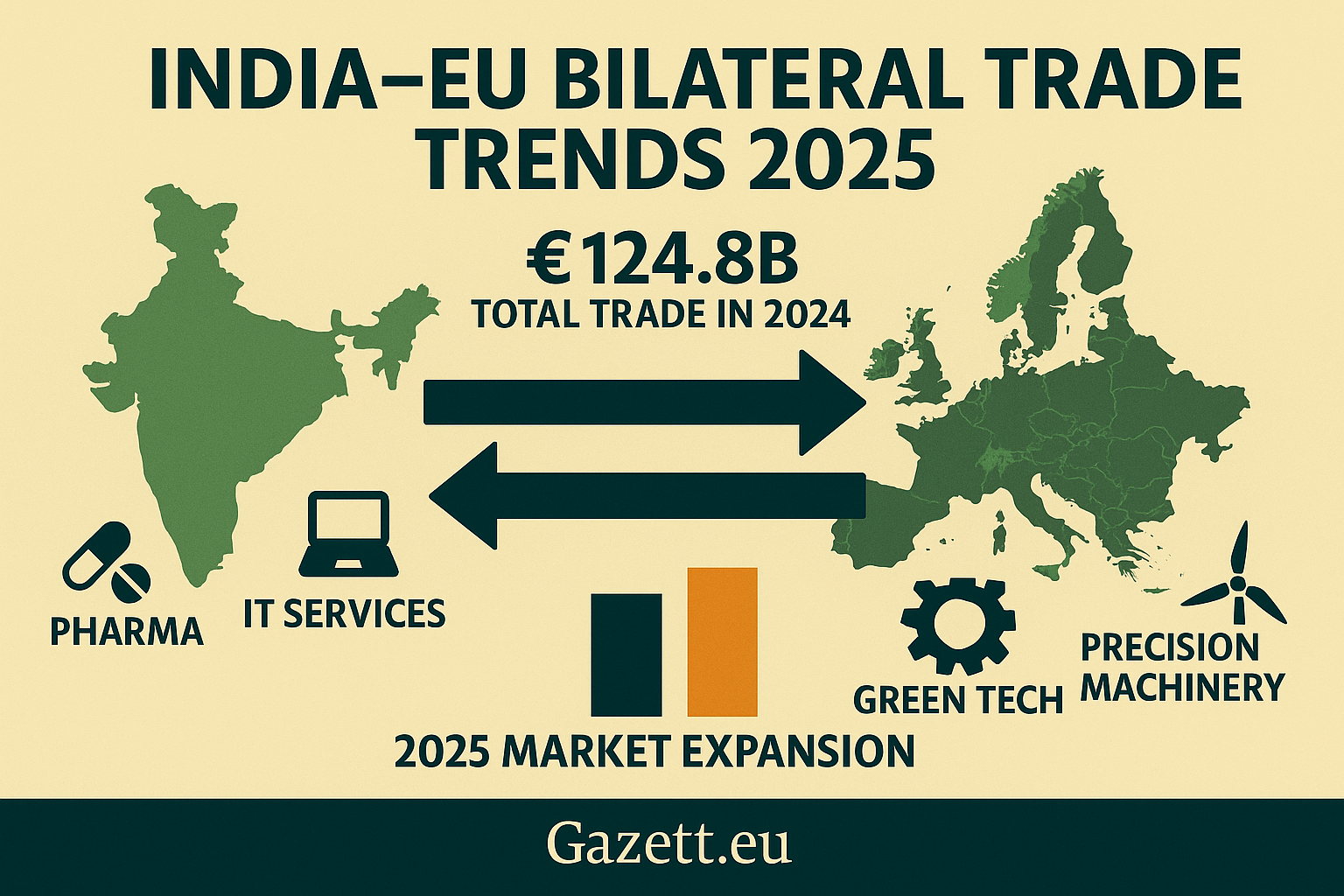
- 📦 Trade Value: €124.8B total trade in 2024 (up 21% YoY)
- 💊 Top Indian Exports: Pharma, IT services, auto parts, apparel
- ⚙️ Top EU Exports: Green tech, EVs, precision machinery
- 📉 China+1 Strategy: India gaining share in EU’s import portfolio
- 📊 2025 Outlook: Projected trade to exceed €135B by year-end
This expansion also reflects policy alignment through trade facilitation and regulatory harmonization. For example, India’s adoption of EU-compliant digital standards, carbon norms, and IPR frameworks is making it an increasingly reliable trade partner for European blocs.
Internal source: Gazett.eu | Related: EU–India Trade & Tech Alignment 2025
🛠️ Diversifying Supply Chains: India as a Trusted Partner
As Europe seeks to build resilience in the wake of global disruptions, India is emerging as a trusted alternative to China-centric supply chains. Whether it’s pharmaceuticals, electronics, or critical minerals, India is quickly becoming a top relocation and co-production destination for European firms.
European companies are increasingly investing in India’s manufacturing zones, logistics corridors, and special economic zones — often with local partners and tech-sharing agreements. This is particularly true in sectors like APIs (Active Pharmaceutical Ingredients), rare earth elements processing, and consumer electronics.
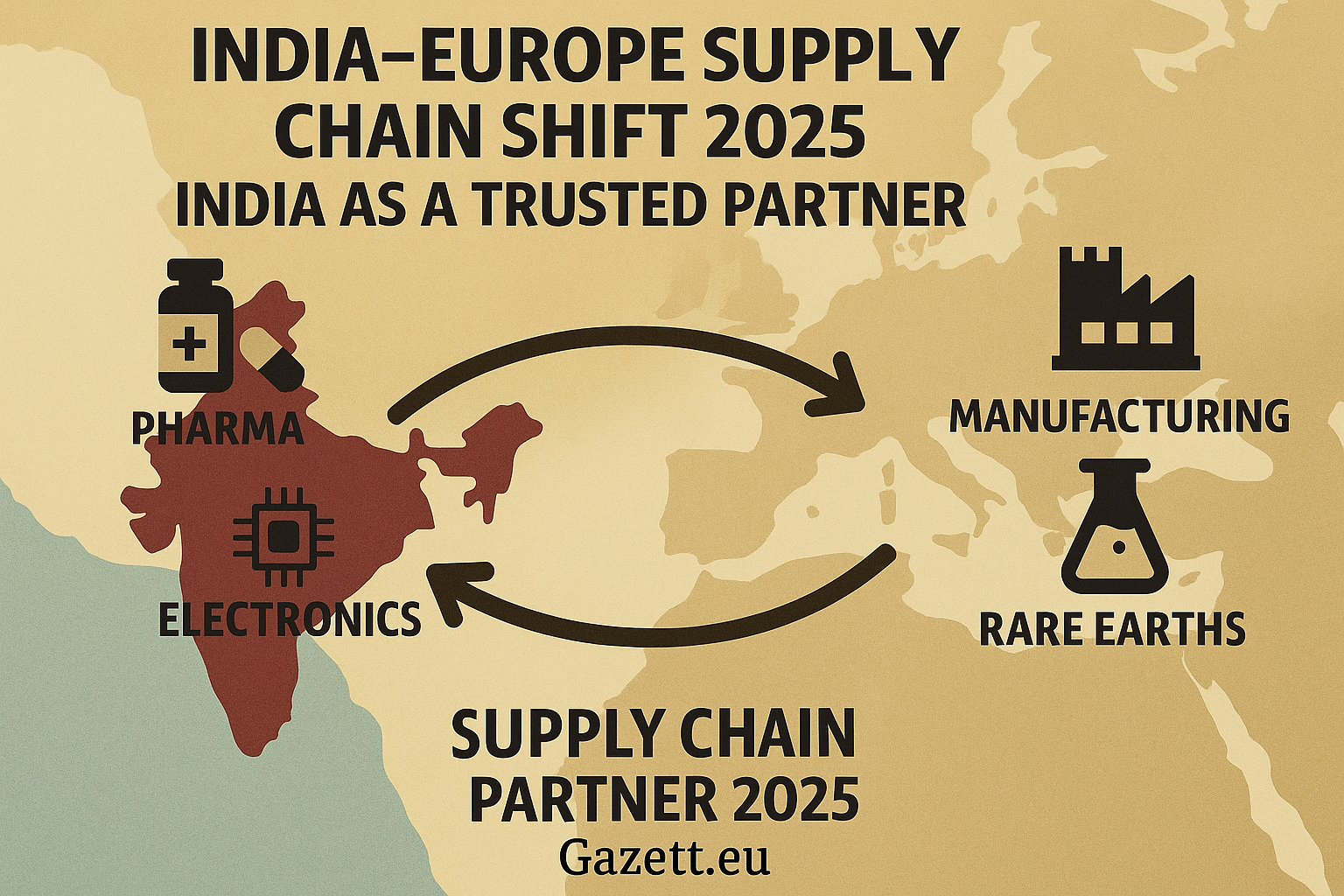
- 🔄 China+1 Realignment: India now primary relocation hub for EU firms in electronics & pharma
- 🏭 Key Production Zones: Gujarat, Tamil Nadu, Maharashtra for EU-aligned supply projects
- 📦 Co-Manufacturing Models: Indian firms supplying semi-finished goods to EU plants
- ⚓ Port + Rail Upgrades: India’s Sagarmala & DFC projects ease EU logistics routes
- ✅ Compliance Edge: India meeting REACH, CE, and other EU regulatory standards
For Europe, India offers both **scale and democratic stability** — a rare combination for long-term, high-trust industrial diversification. Explore our deeper dive into India’s role in reshaping EU’s risk-sensitive supply chains.
Internal source: Gazett.eu | Related: Supply Chain Resilience: India–EU 2025
🔋 Energy & Green Transition: A Strategic Collaboration
As the EU intensifies its shift toward net-zero targets, India has emerged as a strategic green ally. The partnership extends beyond clean energy trade — it involves joint innovation in solar, hydrogen, battery storage, and sustainable mobility. India’s massive renewables market complements Europe’s advanced technologies, creating a mutually reinforcing green corridor.
The launch of the India–EU Green Hydrogen Partnership and cooperation under the International Solar Alliance (ISA) have already unlocked joint pilot projects and supply contracts. European firms are investing in India’s clean-tech production zones, while India is importing wind turbine tech, smart grid systems, and carbon capture innovation from EU players.
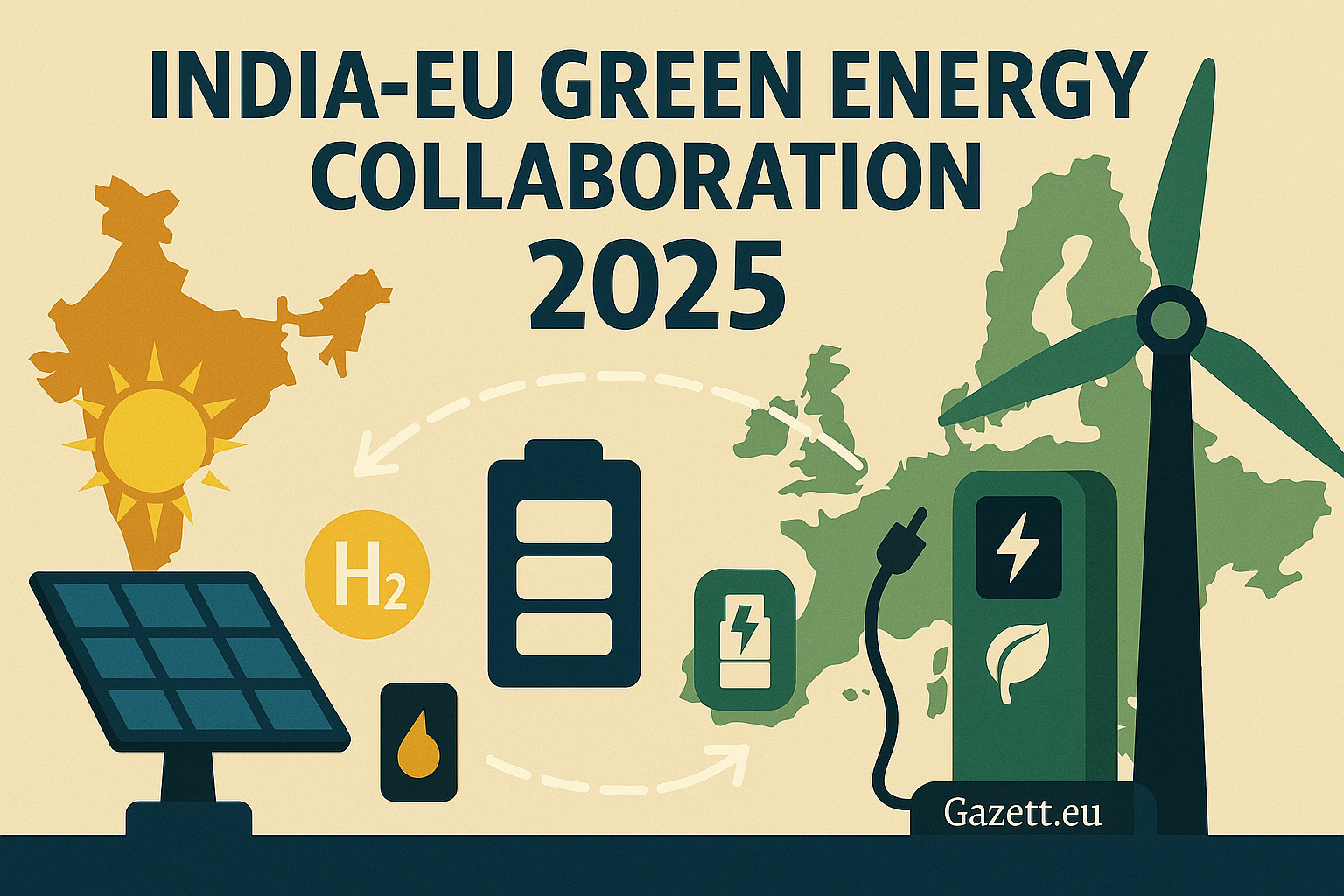
- ☀️ Solar Alliance: India hosts 8+ EU-backed solar parks under ISA framework
- 🧪 Hydrogen Pact: Bilateral funding & pilot electrolyzer plants in Gujarat & Andalusia
- 🔋 Battery Exchange: India importing EU cell tech; EU sourcing lithium components from India
- 🚉 Green Mobility: Co-development of EV bus platforms and charging grid protocols
- ♻️ Climate Compliance: India aligning carbon metrics with EU CBAM (Carbon Border Adjustment Mechanism)
With the EU’s climate financing tools and India’s green scale, this corridor is becoming one of the most promising climate partnerships of the decade. Explore our feature on India–EU: The New Green Corridor.
Internal source: Gazett.eu | Related: India–EU Green Energy Framework
💻 Tech Ties – Digital Trade, AI, and Critical Technologies
Beyond goods and energy, India–EU collaboration is fast accelerating in digital trade, artificial intelligence, and emerging technologies. As the EU modernizes its Digital Single Market and India scales its tech-driven growth, the two sides are finding alignment in data governance, cross-border cloud services, and ethical AI frameworks.
Both sides have signed agreements on trusted data flows, cybersecurity cooperation, semiconductor research, and digital infrastructure co-financing. European tech giants are deepening their India presence, while Indian SaaS and fintech players are expanding across EU cities via remote and hybrid models.
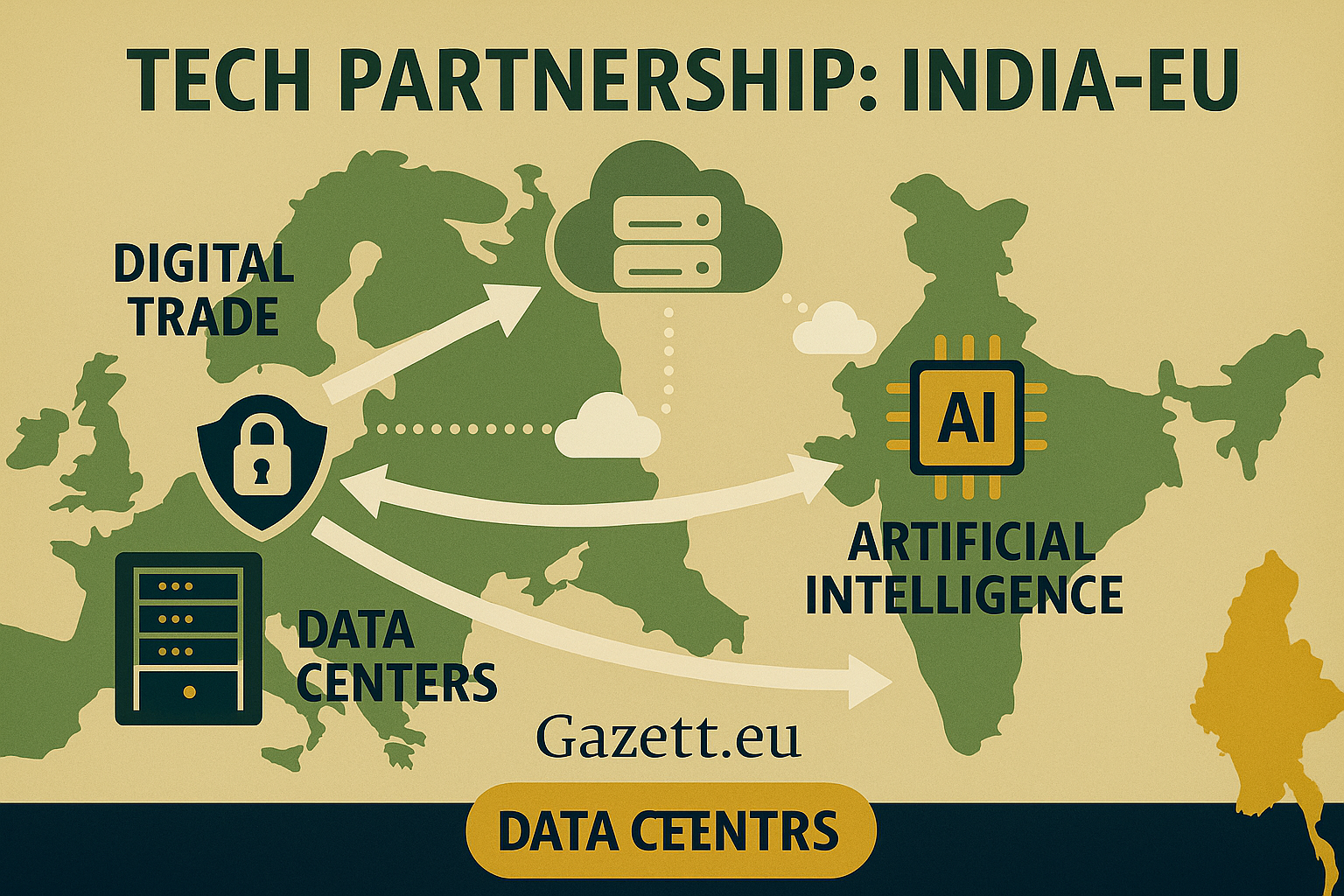
- 🧠 AI Ethics Alliance: India–EU working on shared guidelines for ethical AI & facial recognition
- 🌐 Cross-Border Cloud: Indian data centers hosting EU clients; EU firms operating in India’s data parks
- 💳 Fintech Expansion: UPI–SEPA integration pilots, Indian wallets gaining EU user base
- 🔒 Cybersecurity Roadmap: CERT-In and ENISA enhancing joint threat response protocols
- 🧩 Quantum & Semiconductors: India partnering in EU Horizon 2030 & Chips Act corridors
Tech diplomacy is now at the heart of India–EU economic strategy — merging digital sovereignty with innovation cooperation. Explore how these tech ties are shaping the next decade via India–Europe Tech & AI Diplomacy 2025.
Internal source: Gazett.eu | Related: India–Europe: Future of Tech Partnerships
💰 Investment Bridges – India’s Capital Flows into Europe
India’s outbound investment is increasingly targeting Europe’s high-tech, manufacturing, and sustainability sectors. In 2024 alone, Indian firms announced over €6.3 billion in greenfield and M&A investments across Germany, the Netherlands, France, and Eastern Europe. This marks a sharp shift from traditional IT and pharma deals to a broader industrial and infrastructure strategy.
Major Indian groups like Tata, Mahindra, Infosys, Serum Institute, and Reliance are now setting up or expanding R&D, EV, biotech, and logistics hubs in Europe — some in partnership with local municipalities or under EU co-financing programs.
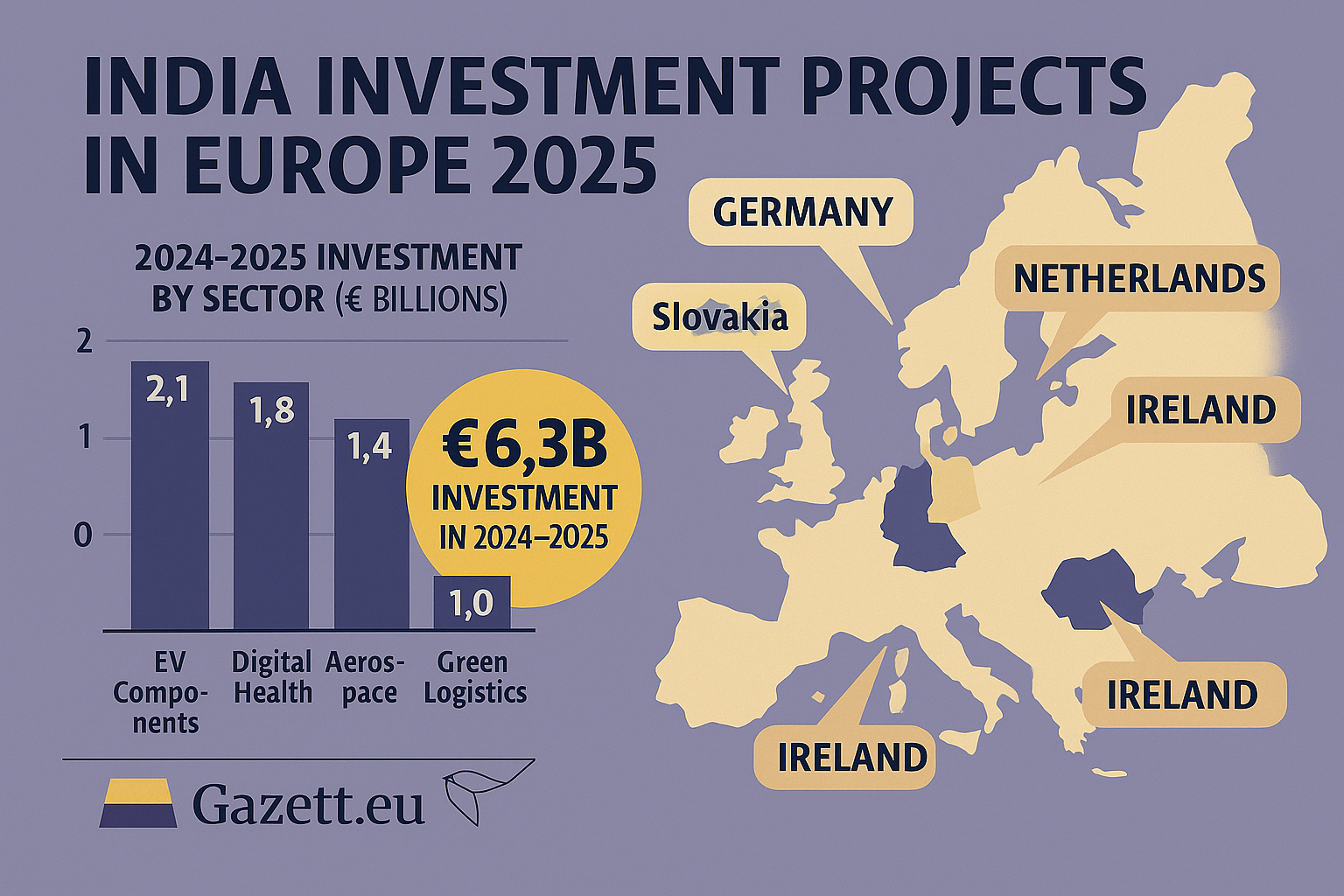
- 📈 €6.3B in 2024–2025: India’s outbound investment into EU markets (up 38% YoY)
- 🏭 Key Sectors: EV components, digital health, aerospace, green logistics
- 🌍 Top Destinations: Germany, Netherlands, Slovakia, Belgium, Ireland
- 🤝 JV Models: Tata–Jaguar Land Rover EV tech, Mahindra–Europe green mobility hubs
- 🔬 R&D Surge: Infosys and Biocon now operating innovation labs in Germany and France
These deals reflect a new confidence in India Inc.’s global maturity — where Europe is no longer just a buyer, but also a platform for joint innovation and sustainability scale-ups. Explore our tracker of India–EU cross-border investment deals.
Internal source: Gazett.eu | Related: India–EU Investment Tracker 2025
🤝 Strategic Agreements – From FTA Talks to Global Forums
One of the biggest drivers of long-term India–EU alignment is the resurgence of strategic frameworks — from **Free Trade Agreement (FTA) negotiations** to enhanced cooperation in global platforms like the G20, WTO, and COP summits.
After a decade of stalled talks, the EU–India FTA negotiations were formally revived in 2022, with major progress on tariff harmonization, digital trade rules, and carbon border mechanisms taking shape by mid-2024. A provisional deal is expected in late 2025, covering goods, services, and investment facilitation.
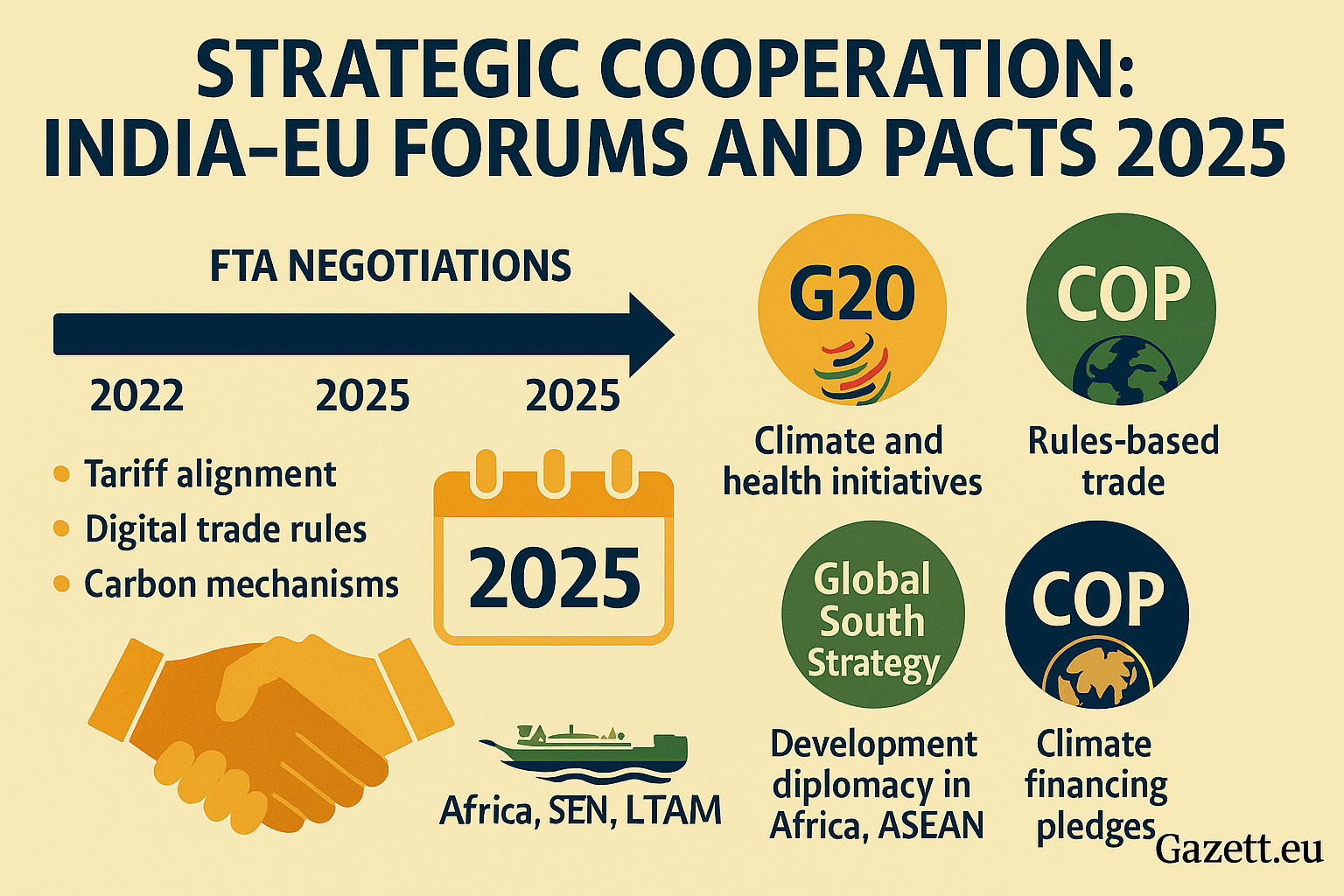
- 📜 FTA Track: Key deliverables on customs, IP, sustainability standards underway
- 🌐 Digital Trade Chapter: Data governance, cyber norms, and trusted flows being codified
- 💬 G20 Synergy: India–EU co-hosting climate financing and health innovation panels
- 🔄 Global South Strategy: Joint development diplomacy in Africa, ASEAN, and LATAM
- 🛡️ Rules-Based Framework: Both blocs reinforcing WTO-centered multilateralism
These alignments aren’t just transactional — they are shaping the blueprint for a **multi-aligned, democratically-governed global economy**. Don’t miss our deep dive into the future of India–EU Free Trade Roadmap.
Internal source: Gazett.eu | Related: India–EU FTA Tracker 2025
🌍 Future Outlook – India’s Expanding Economic Footprint in Europe
As 2025 progresses, India’s role in Europe’s economic renewal is no longer peripheral — it is central. The trajectory of the relationship points toward deeper industrial integration, climate coordination, and technology partnerships.
In addition to trade and investment, India’s demographic advantage, multilingual workforce, and global governance presence make it a natural complement to Europe's evolving needs. This growing synergy is also reflected in education partnerships, dual-degree programs, and startup bridges being forged between Delhi, Bengaluru, Berlin, Paris, and beyond.
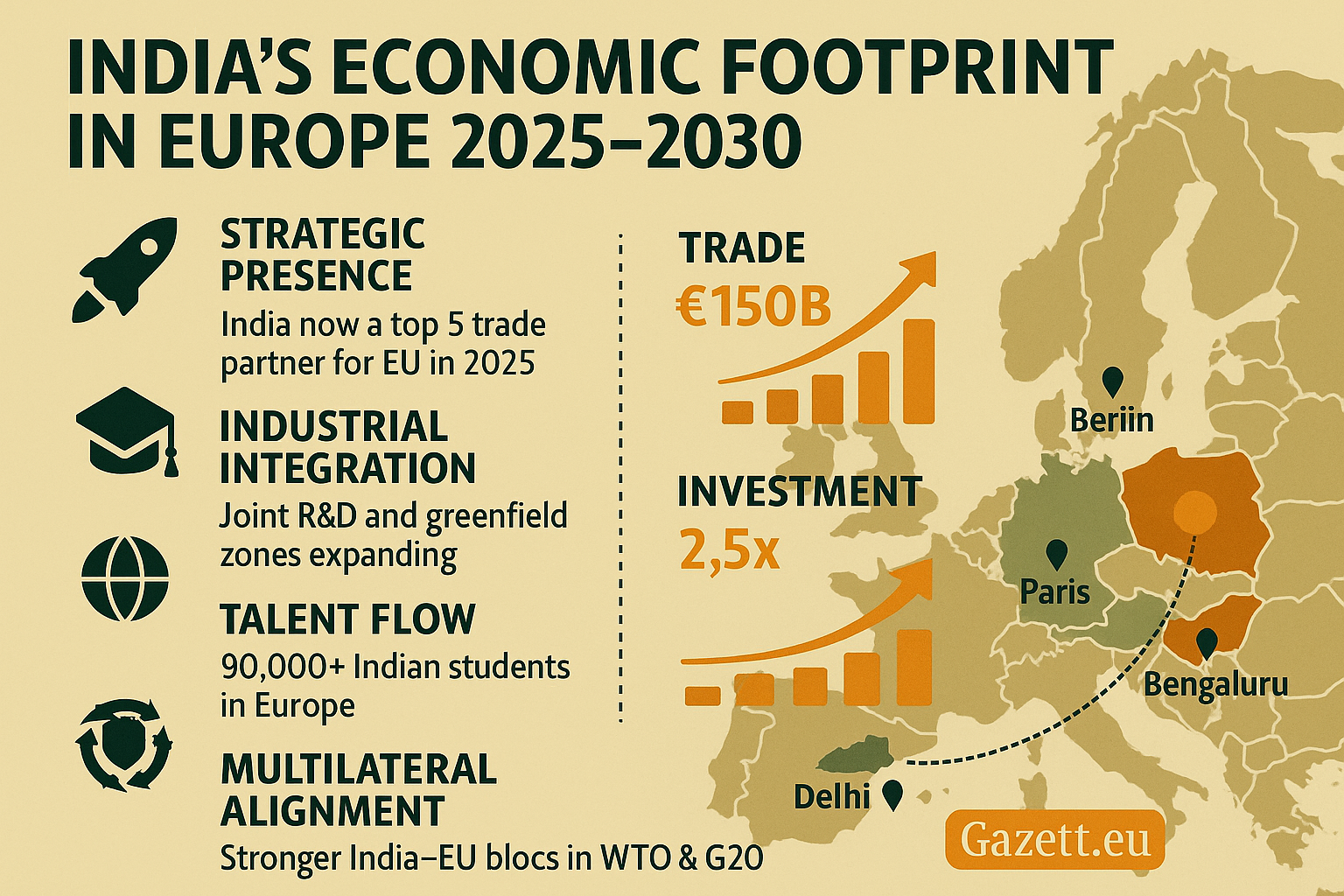
- 🚀 Strategic Presence: India now a top 5 trade partner for EU in 2025 (ahead of Japan)
- 🏗️ Industrial Integration: Joint R&D and greenfield zones expanding in Central & Eastern Europe
- 🎓 Talent Flow: 90,000+ Indian students in Europe; growing tech-sector recruitment
- 🌐 Multilateral Alignment: Stronger India–EU blocs in WTO, COP30, and G20 frameworks
- 📊 Forecast: Bilateral trade to surpass €150B by 2027; investment flows up 2.5× by 2030
The EU–India relationship is no longer transactional. It’s shaping into a long-term **geo-economic alliance** that will define the future of open, diversified, and sustainable global growth. Explore related insight: India–EU: A Shared Economic Future.
Internal source: Gazett.eu | Related: India–EU Integration Outlook 2030
✅ Conclusion: India and Europe – Building the Growth Engine Together
The India–EU partnership in 2024–2025 is more than a headline — it’s a deepening economic engine. With trade volumes surging, investment ties expanding, and green-tech & digital corridors emerging, India has become indispensable to Europe’s diversification, resilience, and innovation goals.
As new supply chains are built, talent flows grow, and climate strategies align, the partnership is fast becoming a pillar of 21st-century transcontinental cooperation. And this is just the beginning.
📊 Summary Table – Key Drivers of India’s Impact on EU Growth
| Domain | Highlights (2024–2025) |
|---|---|
| Trade | €124.8B in bilateral trade, projected to cross €135B in 2025 |
| Supply Chains | Relocation from China to India in pharma, electronics, chemicals |
| Energy & Climate | Green hydrogen, solar & battery tech corridor under ISA & CBAM |
| Investments | €6.3B in outbound Indian capital to EU industrial & digital sectors |
| Strategic Policy | FTA momentum, G20–WTO–COP alignment, and multilateral synergy |
External sources: European Commission, Ministry of Commerce – India, UNCTAD 2024 Outlook